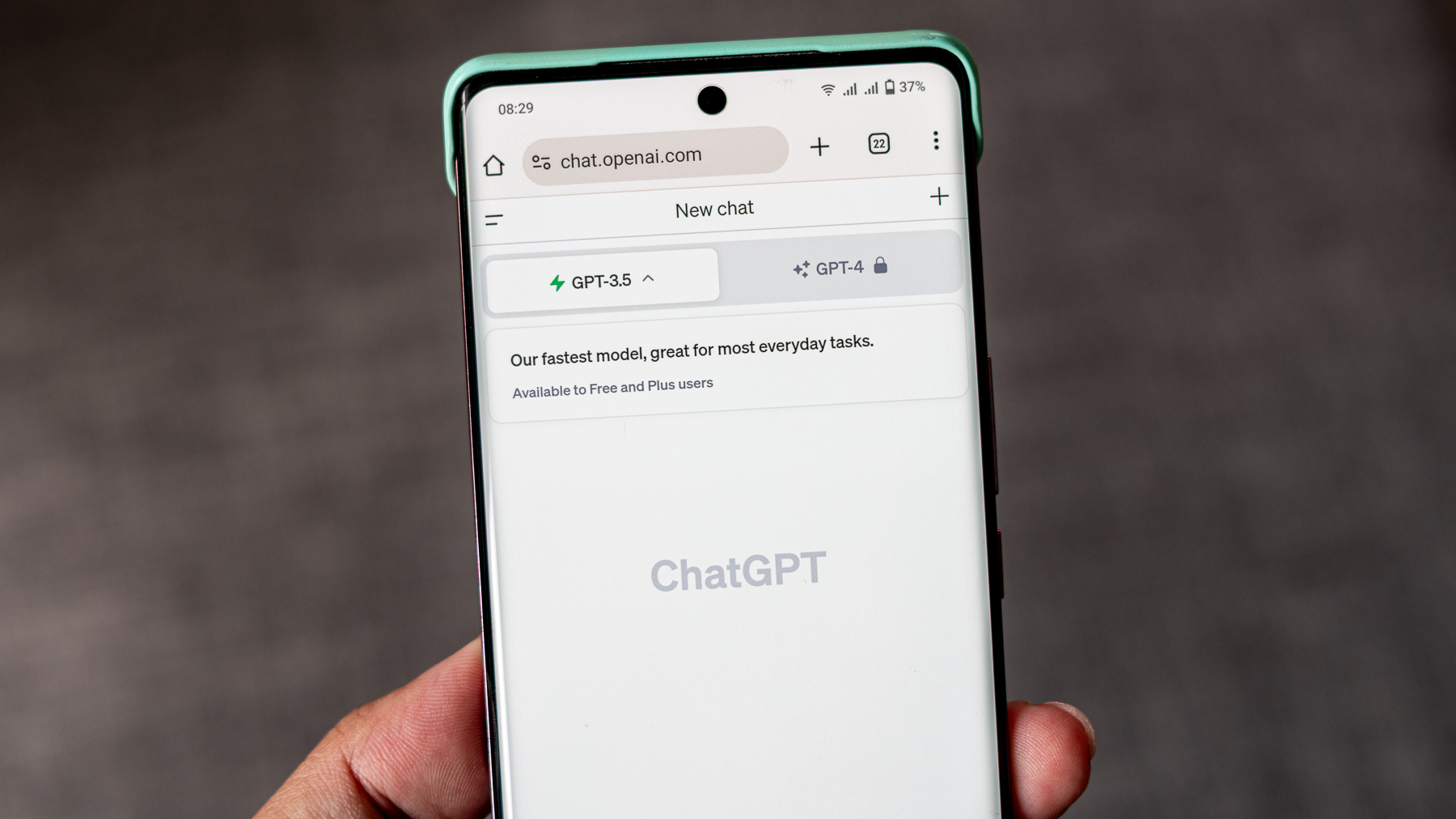First 9 things to do with your Galaxy Note 10 or 10+
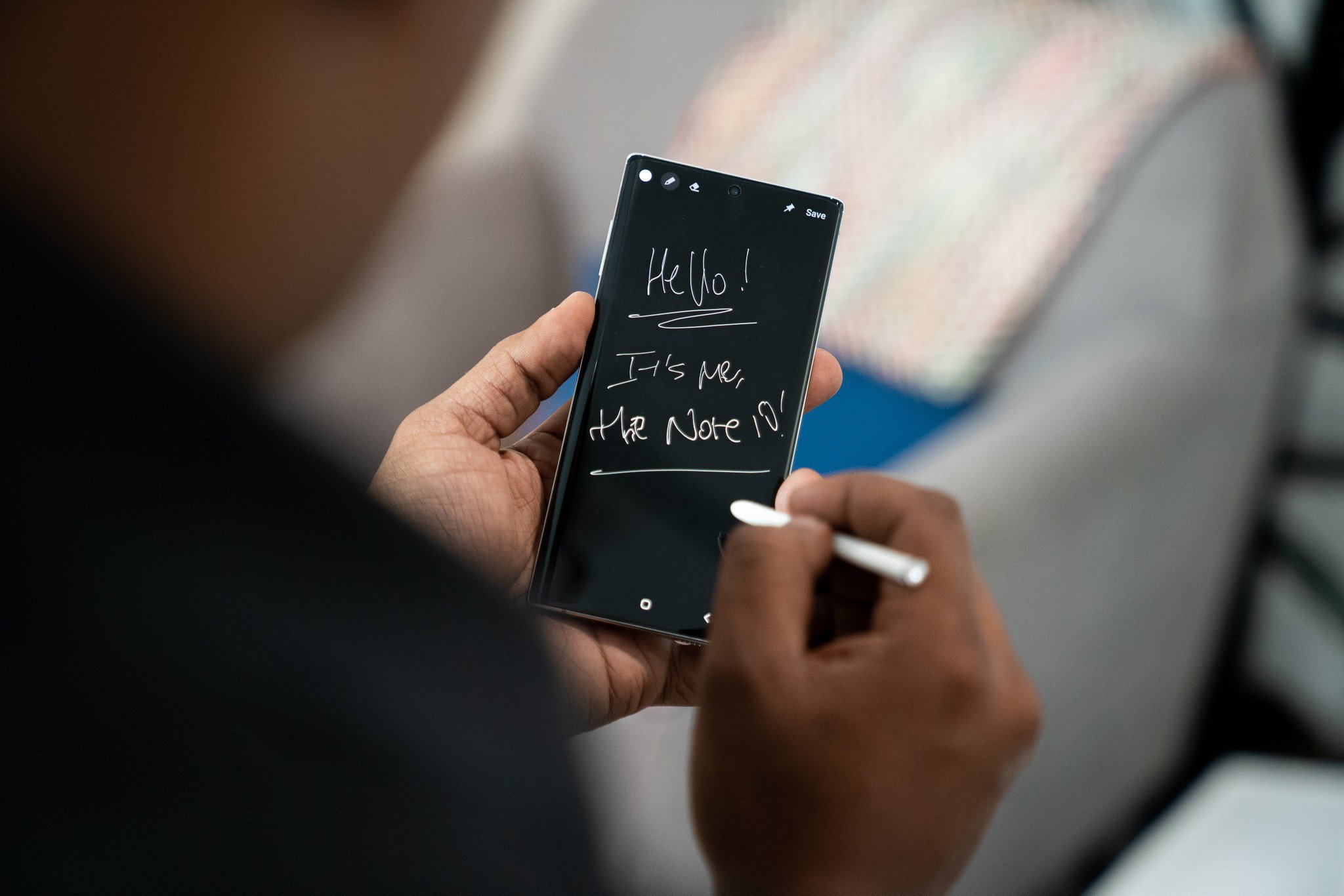
Opening up the box of your brand new phone is always exciting. Even more so when it's a top-end device like a Galaxy Note 10 or Note 10+. That excitement can sometimes make you skip a few important steps when getting started with your phone. Here are some great reminders to get some of the basics done on your new phone so you can start making the most of it.
Configure the side key for power, camera and Bixby
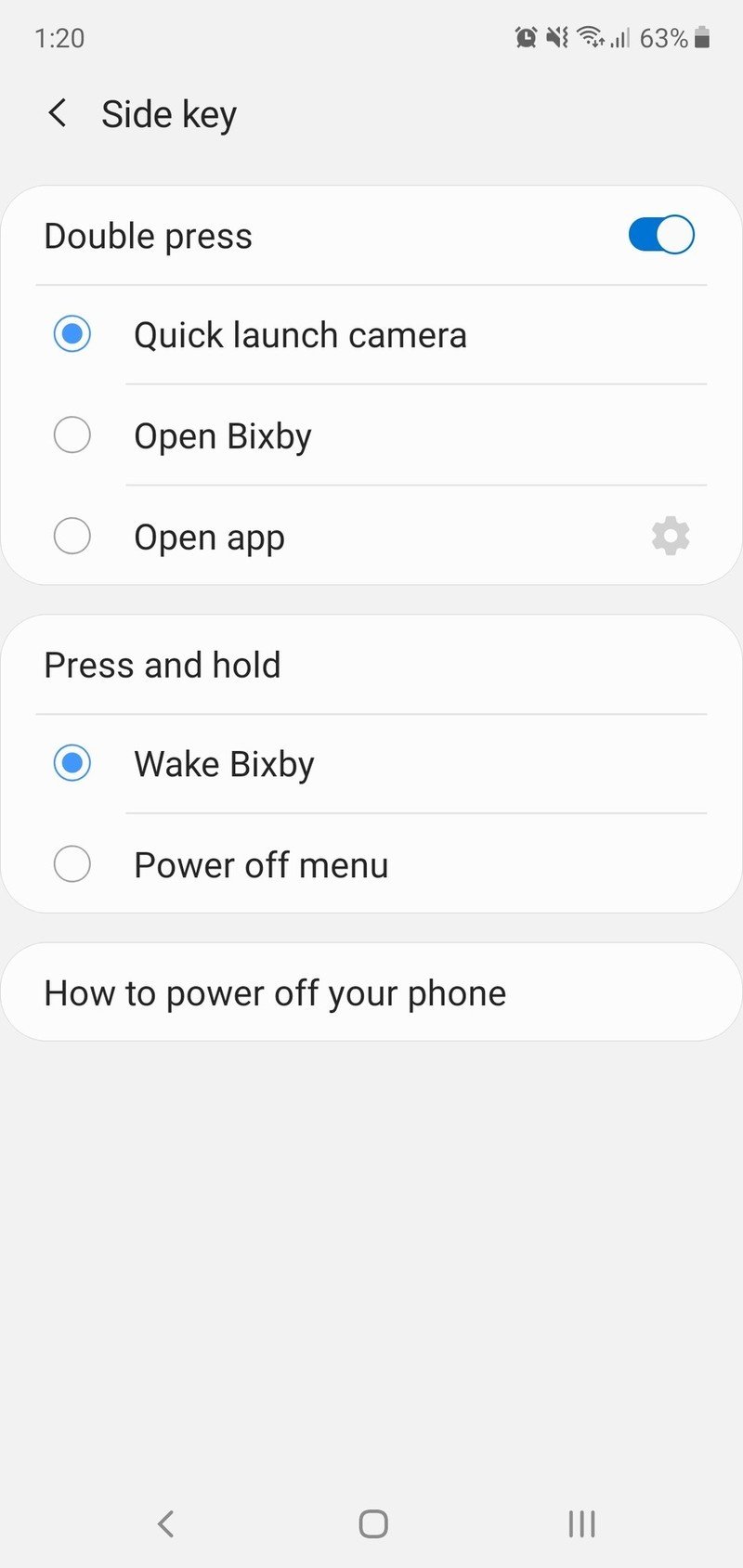
The Note 10 ditched the dedicated Bixby button of previous generations, and that's generally a good thing — it means the power button is lower down and easier to reach, and if you choose to not use Bixby you don't have this vestigial button on the side of your phone doing nothing. But it also means there's some extra configuration required to use that button for multiple functions.
Head into the "Advanced features" settings and "Side key" to get started. By default, a double press of the side key launches the camera, as is the case on recent Samsung phones. But if you wish, you can configure the double press to launch Bixby or any other app — it won't let you deep link into a specific part of the app, but it can at least save you the trouble of tapping the app icon on your home screen.
You can configure the side key's press-and-hold behavior separately — it can either wake Bixby (holding as you speak, and releasing to send the query), or launch the power off menu like you'd normally expect for a power button. If you choose the Bixby option, you'll have to change the way you turn off the phone — either press and hold the side key and volume down button, or open the power off menu from the button in the notification shade.
And if you're wondering how to take a screenshot now that the buttons have switched around, we have a guide for that. But the short version is this: press and hold the volume down and side key for just one second, and release them to capture; if you hold any longer, you'll enter the power off menu.
Set your screen zoom, icon size, and font size
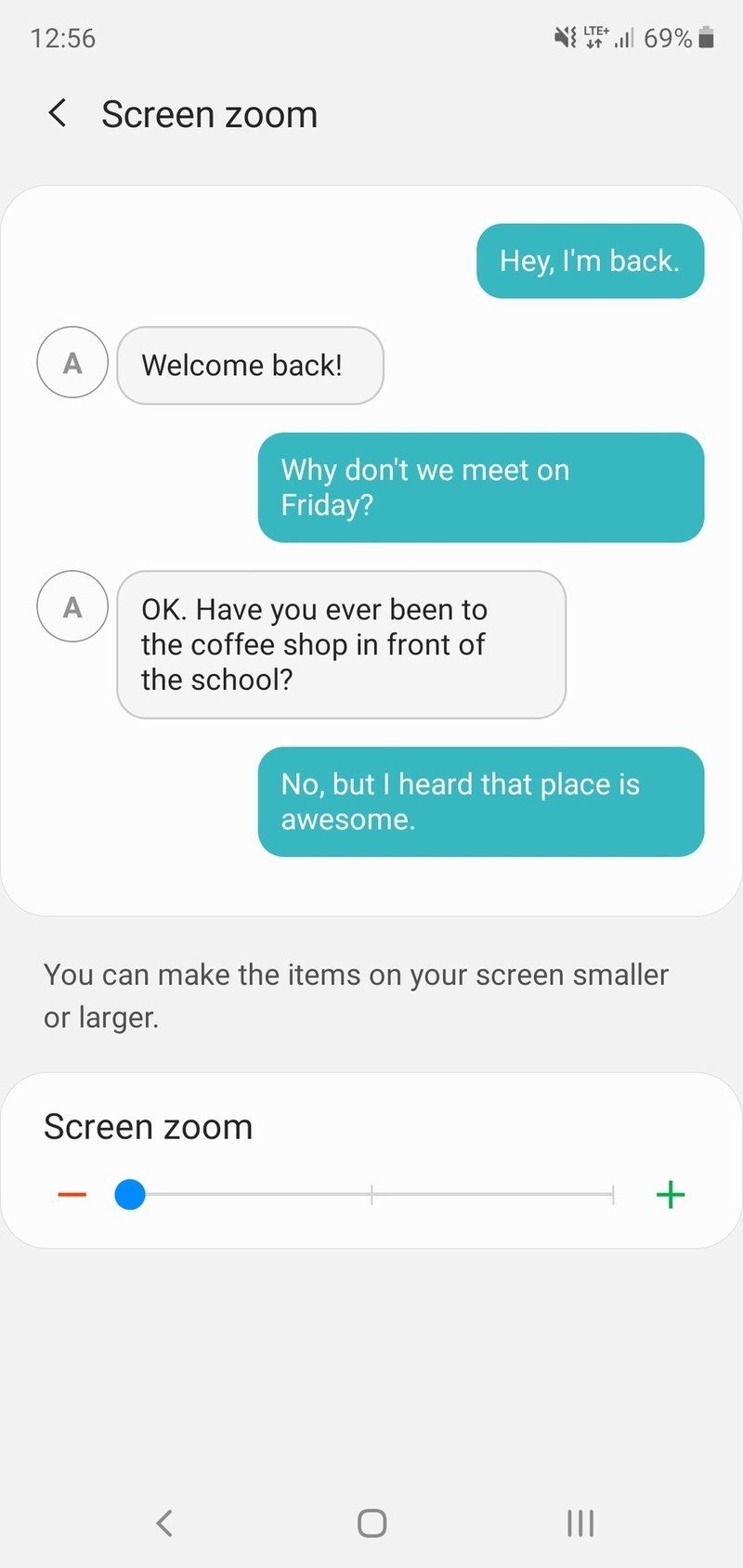
The Note 10 and 10+ ship with large font, icon, and screen zoom sizes, which together don't make great use of the screen real estate. But it doesn't have to be this way. You can change each of these to get the right amount on your screen to match your productivity needs and eyesight.
Everything you'll need to tweak is found in the "Display" settings. To shrink the size of app icons, go into "Home screen" and change both the home screen grid and apps screen grid to "5x5" from its default 4x5. To keep going, back out and go to "Font size and style" to scale down the font size to suit your eyes — this will only change the size of text, nothing else. Then, go back again and go to "Screen zoom" to see if you'll prefer a lower zoom level — that will scale back the size of everything the phone shows, meaning you fit more content on the screen without scrolling.
Be an expert in 5 minutes
Get the latest news from Android Central, your trusted companion in the world of Android
You may have to play around with different combinations of font size and screen zoom to fill the screen in a way that's most comfortable for your eyes, but with a few settings options each it won't take long to get it just right.
Get to know the in-display fingerprint sensor
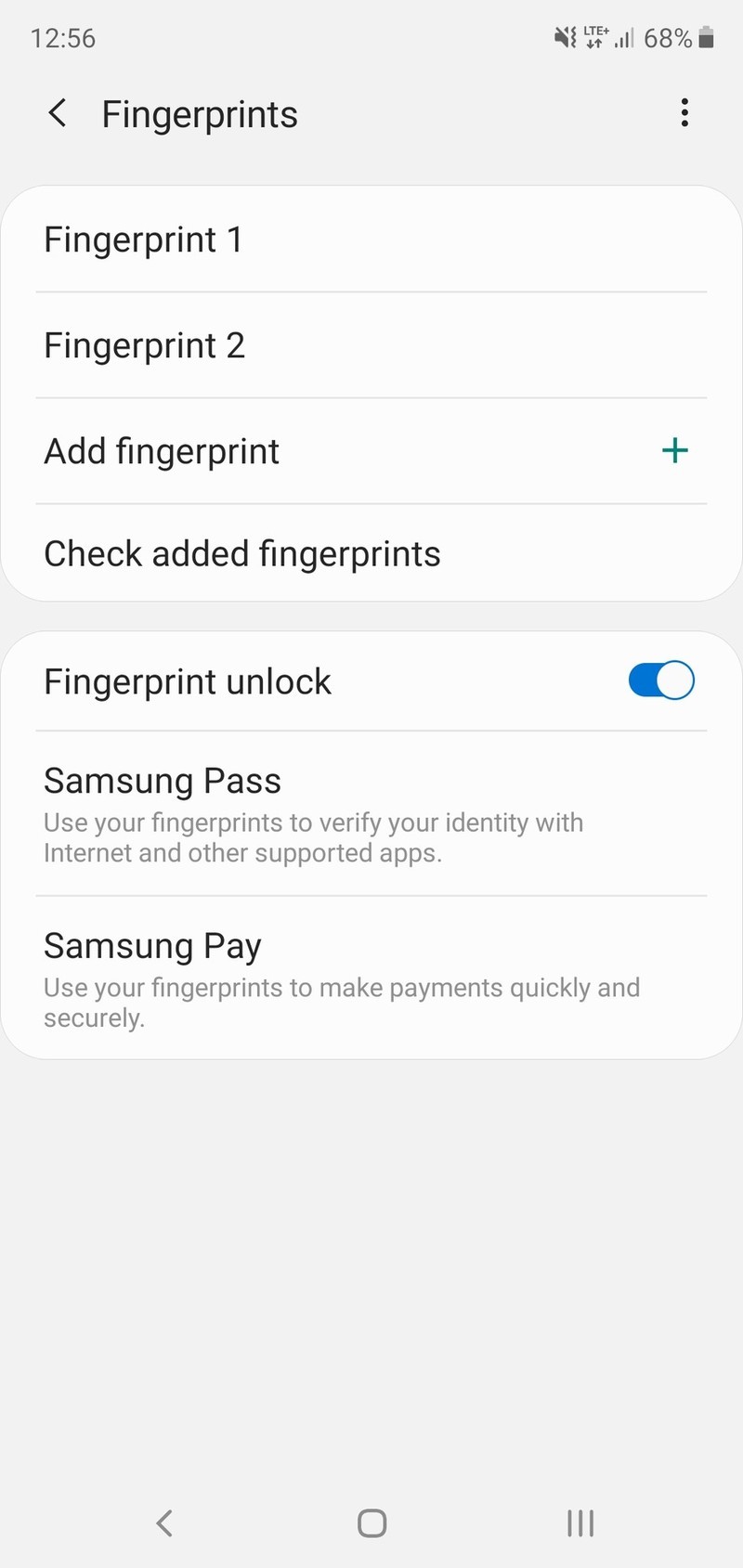
Switching gears from their predecessor, the Note 10 and 10+ have a new ultrasonic fingerprint sensor that's underneath the display rather than on the back of the phone. If you did what most people do and somewhat hastily enrolled your fingerprints during the phone setup process, we encourage you to go back into the "Biometrics and security" settings to start over from scratch and hopefully improve its speed and accuracy.
With this sensor, it's important to enroll your fingerprint exactly how you intend to hold the phone. That starts with taking care to hold the phone during the enrollment process how you normally would when picking it up to unlock. Also, pay particularly close attention to the enrollment process when it tells you to reposition your finger for a complete scan. If you plan to unlock the phone when it's flat on a table, enroll your index finger(s), and again scan them with the phone on a table as you expect to use them.
Once accurately enrolled, pay attention to how your fingers land on the sensor in daily use. Make note of exactly where the phone wants you to place your finger (designated by the fingerprint symbol), and hit it dead center — the recognition area isn't very big, and it may take a little time for muscle memory to kick in to start getting it right. The sensor doesn't require that you press hard on the screen, but you'll start to learn the "right" pressure over time. If you're finding lots of false rejections after a few days, go clear out all of your prints and start over with new knowledge of how you've been using the sensor.
Configure the display colors
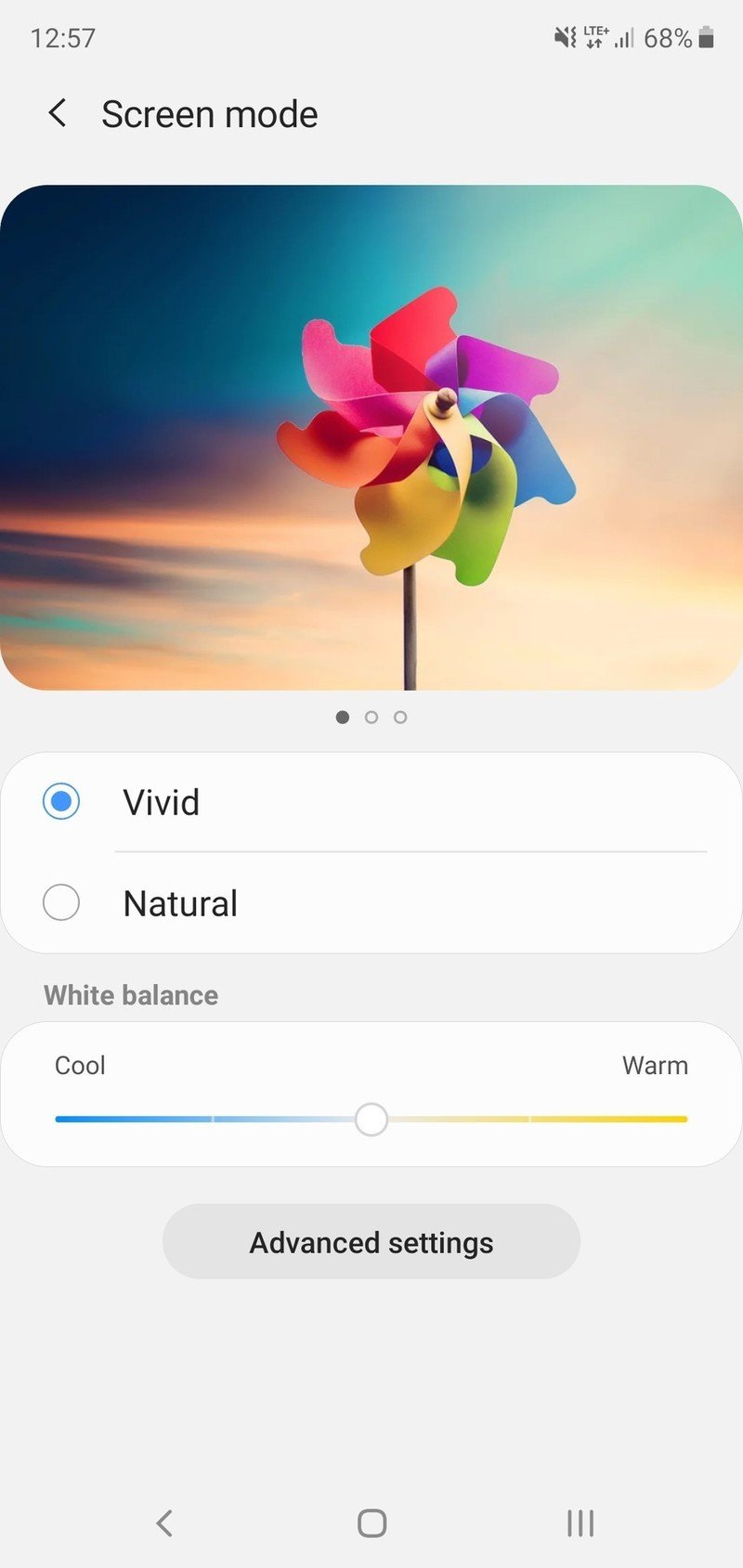
You stare at your smartphone's display for hours a day, so it should look exactly how you want it to. The Note 10 and 10+ come out of the box with their display set to be "Natural," but there are options you can change to tweak the exact way it reproduces colors. Under the "Display" settings you'll find "Screen mode" where you can make the tweaks.
Most people will want to just make the switch from "Natural" to "Vivid" for a more eye-catching view. You'll notice a bit more contrast and extra pop to colors everywhere, but Samsung doesn't go too overboard. Toggle back and forth between the two presets to see which you like more, and if you stick with vivid you can tweak further by moving the "white balance" slider between cool and warm to further suit your tastes.
It may take you a few hours, or even a few days, with each to make a decision. But if you're still not satisfied, tap on "Advanced settings" to get really specific with individual sliders for red, green and blue — you may not know exactly how each one affects the screen, but play around and see if anything makes a noticeable difference for you. Everyone's eyes see colors a little differently, so this can be a great way to personalize things to look right to you.
Set up blue light filter and night mode
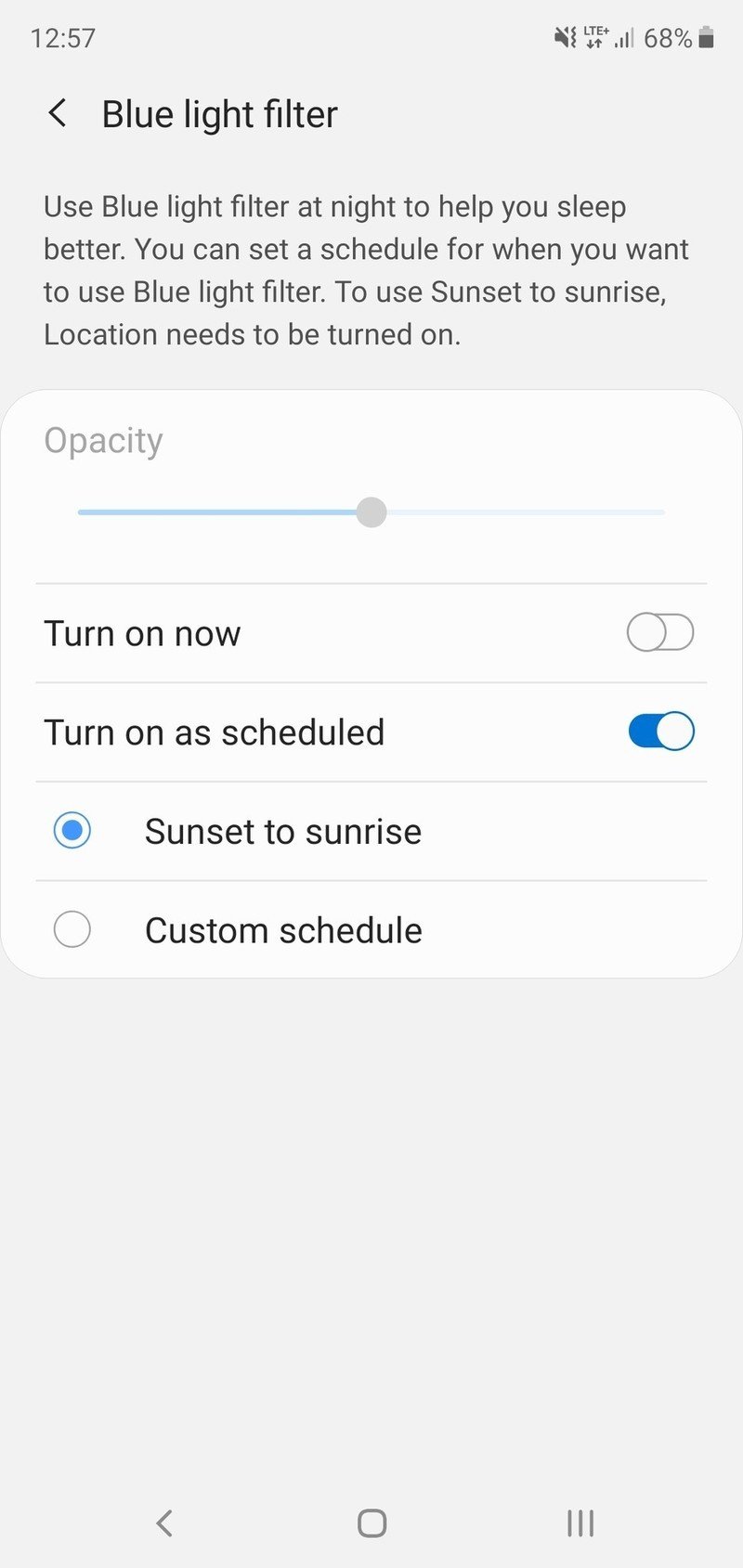
Continuing on the screen talk, Samsung has two features that will change the entire look of the display to help reduce eye strain — whether it's at night, on a schedule, or on-demand. Once again, look for these options in the "Display" settings.
Blue light filter is a feature that reduces the amount of blue light coming from your screen by applying a warm cast to the screen in software. Prevailing research shows that looking at a blue light source can make it tougher to fall asleep at night, and if you agree then you'll want to set this up. The Galaxy Note 10's screen already has incredibly low blue light output, but with some additional warmth from the software, you can reduce blue light output by 99%.
Most people will like the "set it and forget it" option of turning on at sunset and turning off at sunrise, but if you have a more specific schedule set one manually. Toggle "Turn on now" to see how it looks and adjust the opacity to strike a good balance for your eyes. When it comes on automatically, you can always turn it off with a tap in the notification shade quick settings.
Night mode isn't really just for nighttime — you can use it any time if you're the type of person who prefers a dark interface, whether it's for eye strain or just aesthetics. With Night mode turned on, everything in the core software that is white will turn to a dark gray or black. Just like the Blue light filter, you can choose to have it turn on and off to coordinate with sunset and sunrise, but Night mode is something you may just like to have on all the time. After giving it a try, you may just become a fan of the "dark mode" lifestyle.
Protect your new Galaxy Note 10
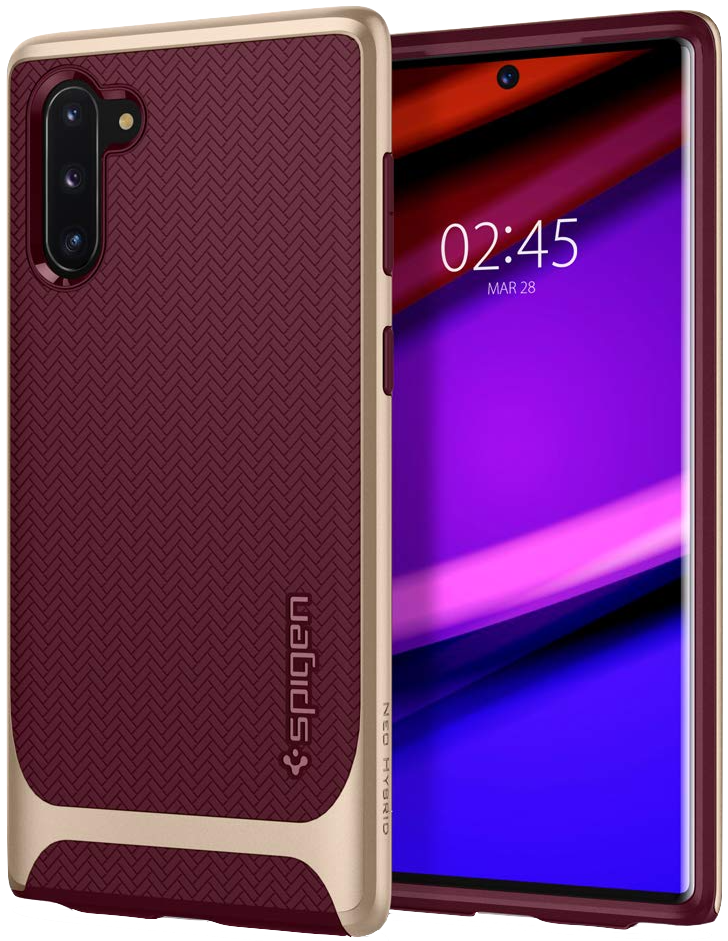
Spigen Neo Hybrid ($13 at Amazon)
No matter what phone we're talking about, one of our all-time favorite cases is the Spigen Neo Hybrid. The Neo Hybrid shines on the Note 10, keeping the phone safe and secure while also looking quite nice (especially in the Burgundy colorway shown here). It's also thin, lightweight, and is easy on the wallet.
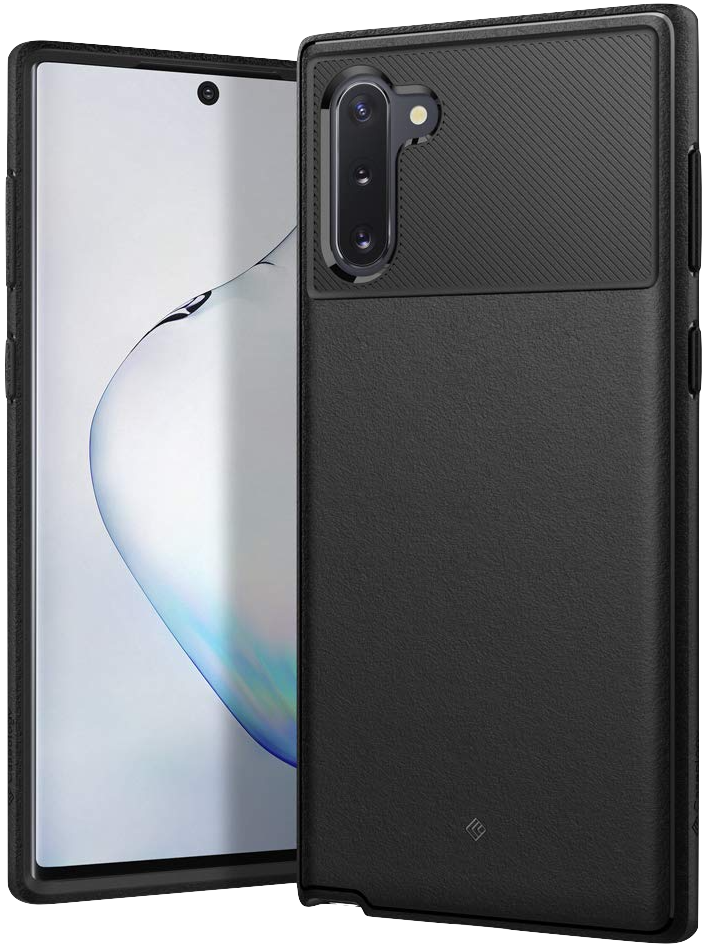
Caseology Vault ($10 at Amazon)
In the market for a Note 10 case that does the basics of keeping your phone safe, look great, and come at a low price? Caseology nails all of those points on the head. The Vault case features a fantastic textured design, shock absorption, and precise cutouts for all of the Note 10's buttons and ports.
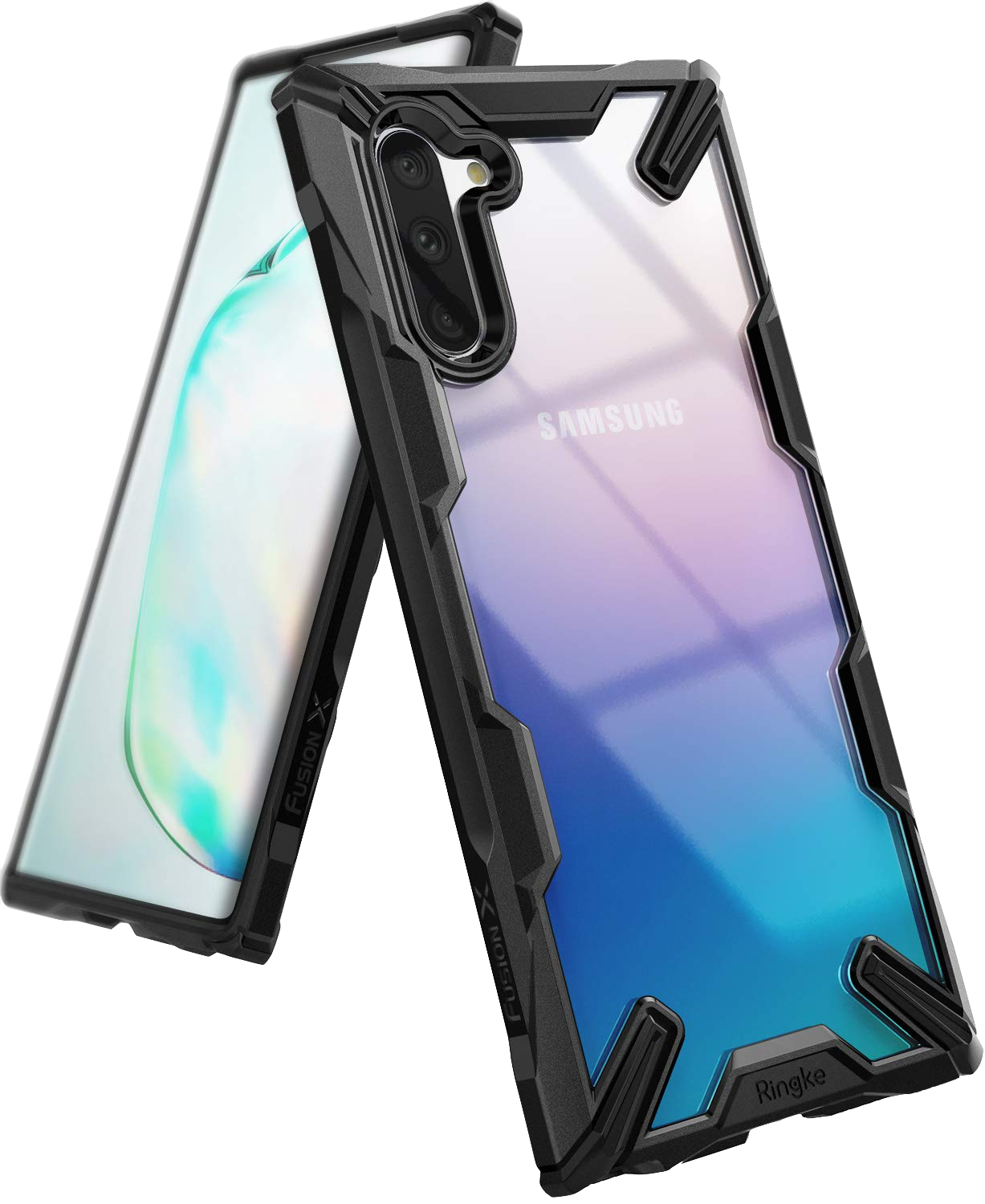
Ringke Fusion X ($13 at Amazon)
Ringke consistently makes great cases for just about every phone that comes out, and for the Note 10, its Fusion X stands out as something special. The clear case + rugged bumper hybrid is as great as ever, allowing the Note 10's design to shine through while simultaneously getting great protection.
Choose gestures or standard navigation buttons
Samsung's optional gesture navigation system isn't super exciting, as it doesn't really integrate with the software as a whole or feel as fluid as some of the competition. Nonetheless, it has one big benefit as it removes the static navigation bar and gives a little more space for whatever app you have open instead. But it isn't turned on by default — you have to enable it. Under "Display" and then "Navigation bar" you'll find all of the options.
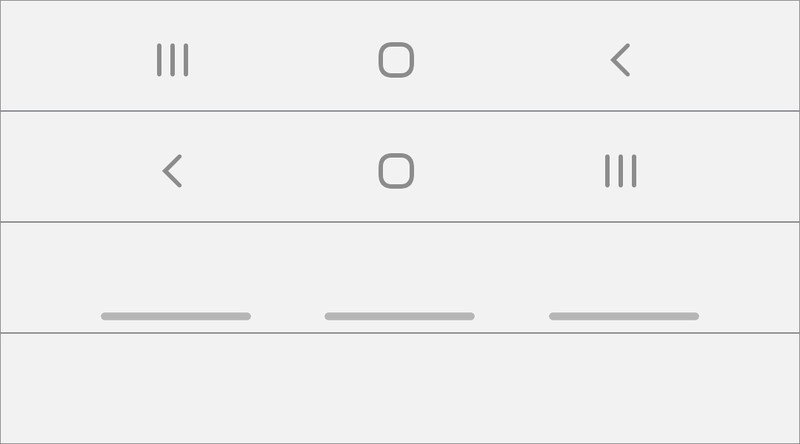
If you turn on "Full screen gestures" it does exactly what you think: replace the back, home, and multitasking buttons with a swipe up in their respective positions. No complicated swipe-and-hold or weird multi-stage movements; just swipe where you previously tapped. If you choose to use the gesture area, you can even turn off the "gesture hints" at the bottom of the screen so you can get back all of that screen space.
Whether you go with the new gestures or stick with the traditional buttons, you can swap the position of the back and multitasking buttons to whatever feels right to you — samsung puts the back button on the right by default, but every other company puts it on the left. The home button has to stay put in the middle, though.
Extra tip: if you stick with navigation buttons, you get the added bonus of being able to do a quick multitasking switch by sliding the home button to the right — it sounds awkward, but it's really great for quickly switching back one or two apps at a time. Give it a try.
Set up the camera app your way
The camera app is filled with tons of features and customization options. So rather than getting caught out and confused by all of the choices the first time you launch the camera when you want to take a photo, take the time to get acquainted with the app before you need it. Open up the camera, and tap the gear icon in the corner to go into the settings. Here are the most important options, listed in the order they show up:
- Rear video size is set to 1080p by default, which is a fine balance of quality, features, and file sizes. For the best-looking video, you'll want to upgrade to UHD (30 or 60 fps, take your pick), but be warned that if you go to the higher resolution option you lose extra features like tracking autofocus and video stabilization. You may actually prefer to shoot in lower resolution to get an overall better-looking video depending on how you're going to shoot.
- Grid lines help you line up your scene and subject properly in the frame, which directly translates to better-looking photos. The 3x3 option is great to line up all sorts of shots, but play around with the square option and see what helps you most.
- Location tags are super useful to add to your photos for searching later. When GPS-tagged photos are uploaded to services like Google Photos, it can help you find photos later based on place, which is often the way we remember them. Location tags can always be removed later when you share a photo and want to keep that information private.
- Camera modes are the different shooting modes you see at the bottom of your viewfinder and can switch between with a tap or swipe. You can choose which modes you want (maybe you never want Food or Super Slow-mo), and then drag each one reflect its importance in the camera — the closer a mode is to "Photo," the easier it is to reach.
- Quick launch is the simplest setting: it lets you launch the camera with a quick double press of the power key, at any time. You want this!
- Shutter sound is on by default ... but nothing's more embarrassing than being the person in the quiet room trying to take photos and having a digital camera shutter blasting out of the speakers. You'll probably want to turn this off.
Tweak the S Pen features
The Galaxy Note is in many ways defined by its S Pen stylus capabilities. You won't learn to master the S Pen in a day or two — it takes a long longer than that — but you can give yourself a great head start by getting acquainted with its settings and features right away. Head to the settings and find "Advanced features" then "S Pen" to get started.
- Air actions let you control your Note from a distance with the S Pen. There are configurable actions for a single- or double-press of the button, as well as gesture controls with movement of the S Pen while holding the button. Only certain apps support air actions, but each supported app lets you choose what happens with button presses and gestures.
- Air command is the menu that pops up when you remove the S Pen from the phone or press its button while it's removed. You can configure what shows up in the air command menu and its position, to fit how you use the S Pen most.
- Pen proximity alert is turned on by default, and you should leave it that way! Your phone will alert you if you happen to walk away from your S Pen — you definitely don't want to have to pay to replace it.
- Sound and vibration are personal preferences, but something you'll probably have an opinion about after using the S Pen for a while. Choose what kind of feedback you want when using the stylus.
Turn off features you don't like
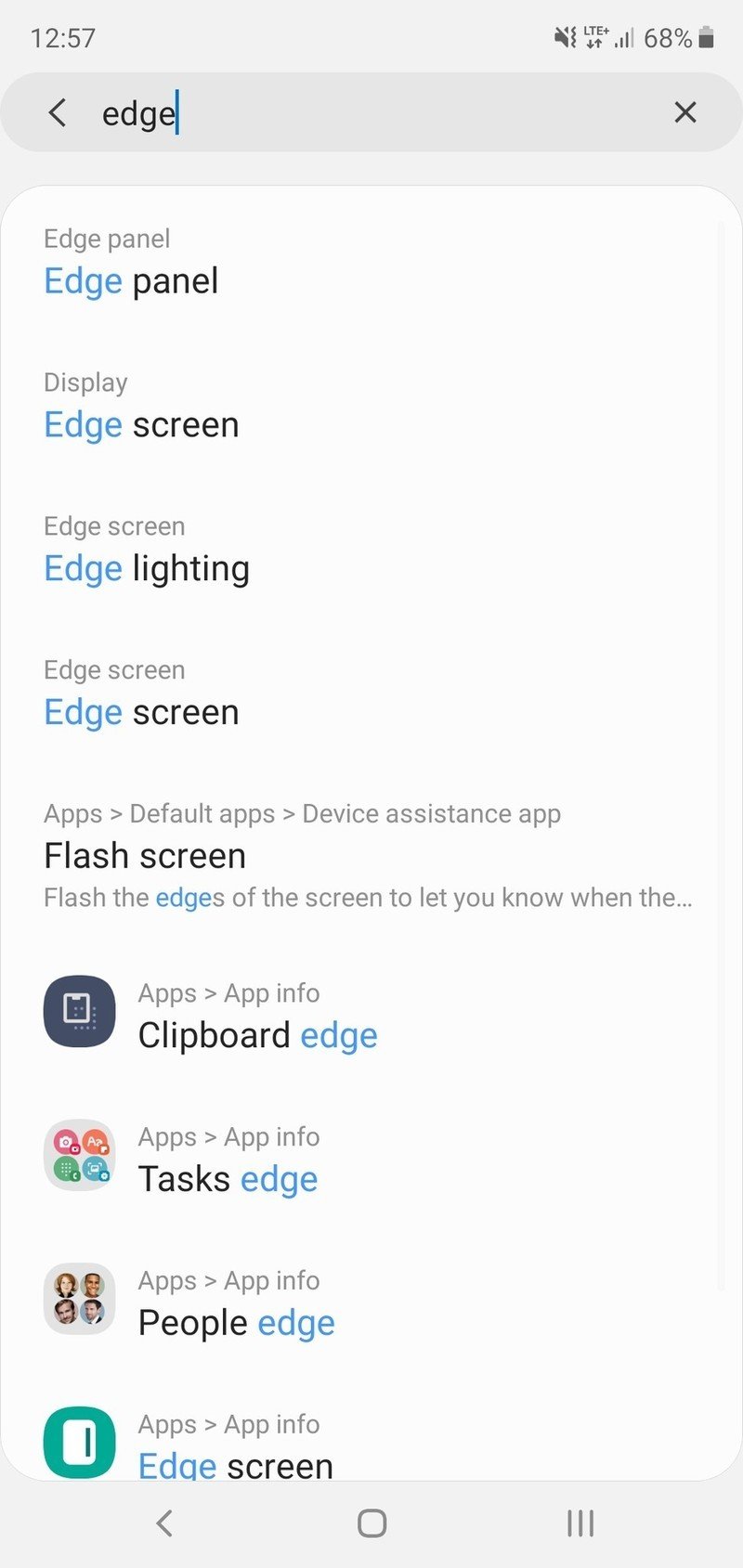
This is more of a general tip, and one that's going to lead to different results for every person, but it's important: if you find something on the Galaxy Note 10 or 10+ you don't like, you can probably turn it off. Samsung offers a ton of software features, with a bunch turned on out of the box ... but that doesn't mean they're all features you'll want to use on a regular basis. And if you're not using them, you should get them out of your way.
If you find you're not using a feature, or have something that's interfering with anything else you want to do, take a couple of minutes to poke around and find a setting for it. There's a good chance you can turn it off, tweak it, or make a change so that it isn't annoying anymore. You can always come back to it later if you change your mind.
Some features are as simple to turn off as heading into the settings and using the search function — it doesn't matter where the setting is, if you can search and find it by name, that's what matters. Otherwise, start opening up the apps or feature areas themselves and start looking for the settings gear icons; there will probably be an option to scale things back or turn it off entirely. One of the most powerful parts of Samsung's software is its customizability — take advantage of it to make the software experience exactly how you want it.
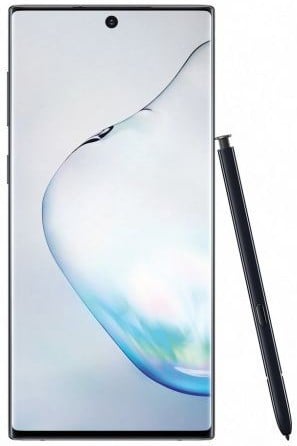
Samsung's Note flagship is back for 2019.
The Galaxy Note is back for 2019, but it looks a little different than usual. Samsung is selling three different models, removed the headphone jack, and is starting to phase out the microSD card. However, with gorgeous AMOLED displays, faster performance, and an S Pen that does more than ever before, these new Notes are certainly worth a look.
Andrew was an Executive Editor, U.S. at Android Central between 2012 and 2020.

